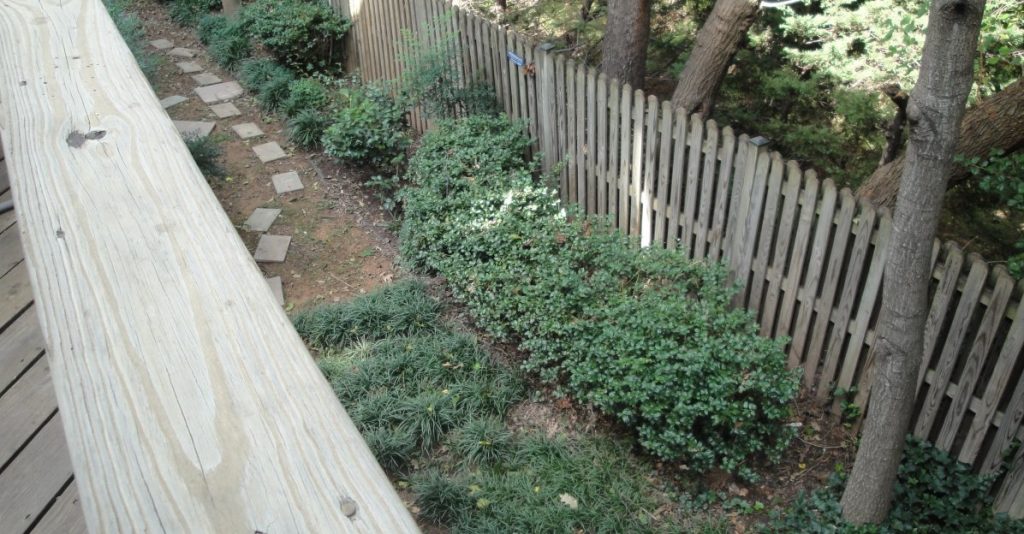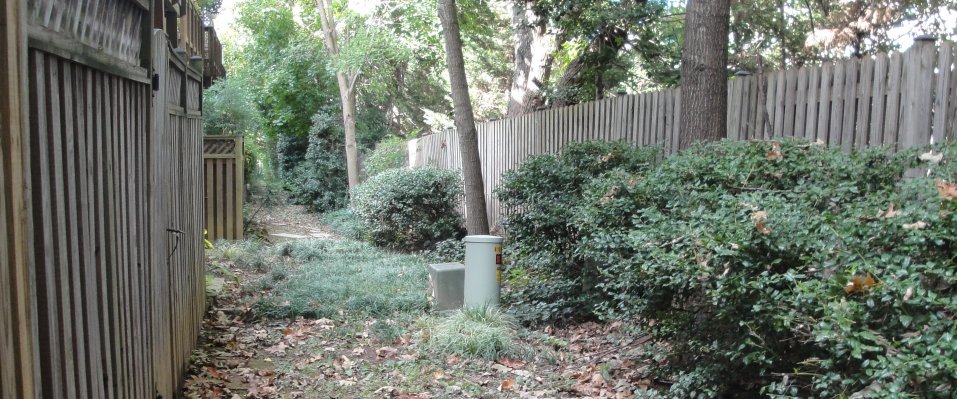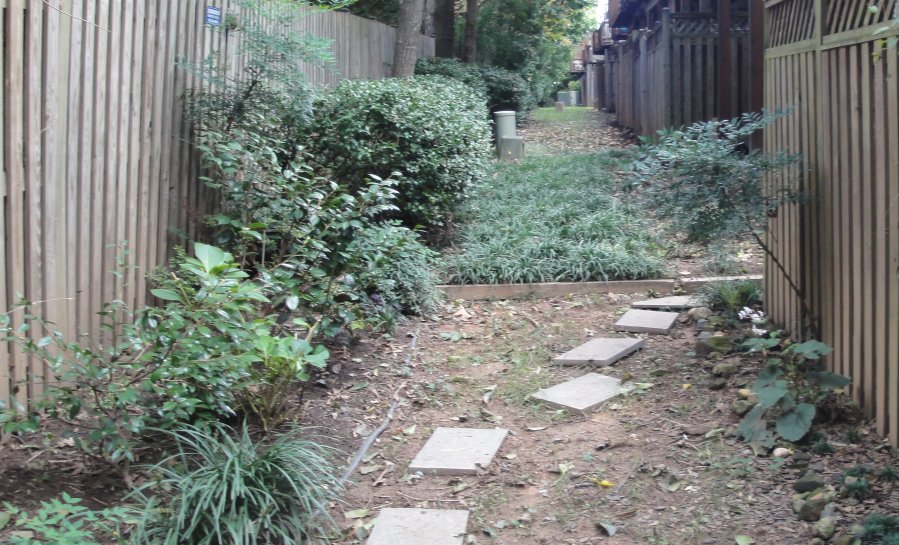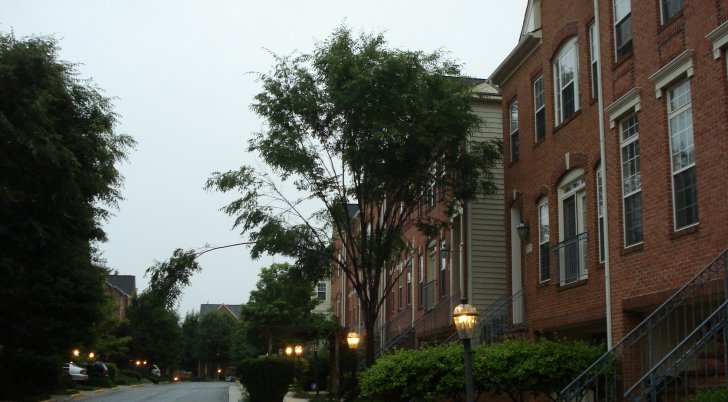
Pictures can tell the story better than words and I will use both. Above is a picture of the recently destroyed wisteria vine in better times earlier this year. With the permission and encouragement of the HOA at the time, I planted that vine and tended it for the next five years, falling a little behind in trimming only during the time I was serving in Iraq. I finally got it to grow completely over the trellis about a month ago. We looked forward to a profusion of flowers next spring. The landscapers evidently thought it was out of control. Look at the picture below. Tell me which you would prefer. The little straps you notice on the boards, BTW, mark places where we had tied and trained the vine, so you can see the progress. Let me add the flowers were free, while the blank wood cost hundreds of dollar to achieve.

Below is lily turf behind our house on Quinn Terrace. I don’t have a “before” picture, but before I planted it (again with the permission and encouragement of the HOA at the time) there was a gully about a foot deep on the far end of the picture. It was worse than the dirt you see to both sides of the picture, since my plants slowed the erosion in those places too.

The area in back of the houses is shaded by the houses and decks. There is not enough sunlight to support most plants, so only shade tolerant plants can grow there. But they CAN grow there. The plants you see stopped and reversed the erosion problem where they were growing and made it a lot less serious problem both above and below by slowing the velocity of rain water. In addition, the plants allowed water to soak into the ground, helping in a small way to make our complex healthier for local streams and the Chesapeake Bay.

Above you see what it looks like from ground level looking west; below is the same thing looking east. This small plantation has trapped enough silt and runoff to raise the soil level by around six inches. Our containment pool used to be yellow with muddy water after a rain. No more. Not since the plants filled in. The only time erosion was a problem recently came when our landscapers scalped the plants down to the nub. It took them a couple months to grow back, but they did.

You can see from the ground level picture that the plants have spread a little to the next lot. They are very adaptive. I volunteered to help plant such cover all along the back of the houses, which would completely solve the erosion problem. Beyond that, these sorts of plants require almost no care. Instead of the landscapers cutting every two weeks, they can trim them back in spring every two years. I understood that there was a plan to make some plantings, maybe also involving river rocks to further help the water flow, but nothing came of it.

Please refer to the pictures above and below for an example of how to solve a problem in an environmentally unfriendly and ugly way and still manage to waste money doing it. There has been a lot of uninformed talk about putting in some kind of drain to improve the landscaping behind the houses. One piece of advice is that you should not take recommendations from people who want to sell you something, and we have experience with exactly this sort of thing. An earlier HOA “solved” a drainage problem by installing drains. They are right across the street from my house. I don’t know how many thousands of dollars this cost, but I think my free planting of lily turf is nicer. I have seen the landscapers mowing that area above, BTW. At least they keep it well trimmed.

Sometime the least expensive solutions work the best. We have paid thousands of dollars to do damage. Maybe an approach that takes into account actual conditions on the ground would work better. Finally, I have to put in the maybe cheap shot of the landscaper’s tree trimming. Good job, guys. I sawed off that branch before it broke off and hurt somebody.

So the choice is between green and growing plants that some people might think are “out of control” (judge for yourselves from the pictures) and neatly trimmed mud and empty pressure treated wood. Which do you prefer? And let me add that the flowers and plants are cheaper or free, while the mud and bare wood costs thousands of dollars in maintenance.
